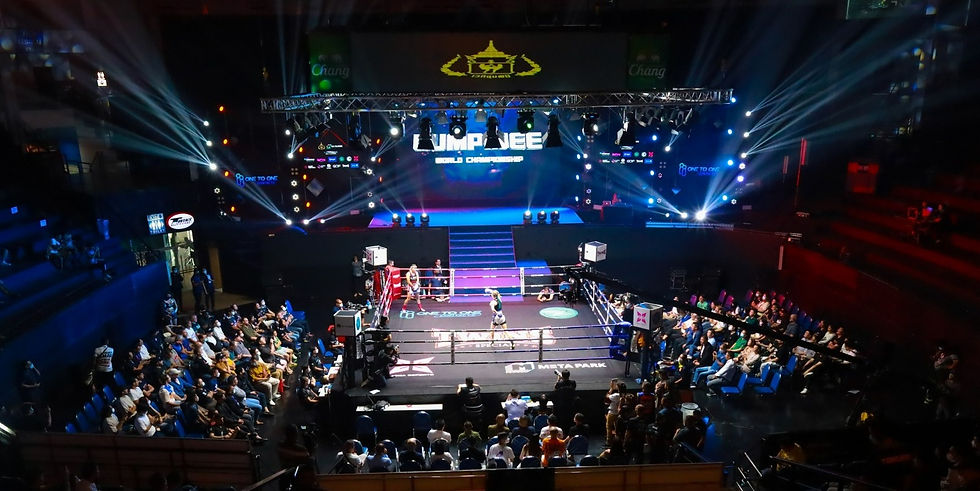Bangkok Stadiums Wai Kru
- ACB Thailand
- Mar 3
- 3 min read
Updated: Jun 23
The Spirit of Muay Thai: Where Tradition Meets Combat
There’s a moment in every Muay Thai stadium when the noise cuts out. The crowd, moments ago a storm of cheers and shouts, hushes into a collective silence. The air thickens.
A single spotlight ignites the ring. And there, in the centre, a lone fighter begins the Wai Kru to the backdrop of the PiJava sound, the ancient ritual that’s more than just a pre-fight routine. It’s the living heartbeat of Muay Thai.
Wai Kru: More Than a Ritual
Long before the punches land and elbows fly, fighters step into the ring not as warriors but as students, paying homage to those who forged the path before them. The Wai Kru isn’t about performance; it’s about respect.
To family. To tradition. It’s one of those rare moments in modern sport where time folds back on itself, and centuries of culture flood into a single space.
As the eerie wail of the Pi Java drifts through the air, fighters circle the ring. Each movement in the Ram Muay is personal. Some embody mythical warriors, others channel the grace of ancient kings. But behind every bow and step is a story
of struggle, sacrifice, and a relentless chase for greatness.

The Icons of Muay Thai: Rajadamnern and Lumpinee
Nowhere is this living tradition felt more intensely than inside the legendary stadiums of Bangkok — Rajadamnern Stadium and Lumpinee Stadium. These aren’t just venues; they’re sanctuaries where Muay Thai’s spirit is at its purest.
At Rajadamnern, Thailand’s oldest active stadium, the air carries the weight of history. Some of the greatest fighters to ever lace up gloves have shed blood and tears under its lights. The Wai Kru here feels heavier, as if the ghosts of past champions are watching.

Wai Kru at Lumpinee Stadium, meanwhile, is a proving ground where reputations are built and shattered in equal measure. It’s not just about the fight — it’s about whether you carry the heart and humility to bow your head before you raise your fists.
Bangkok Stadiums Wai Kru
It doesn’t matter whether you’re ringside in Bangkok or a smaller provincial arena — the Wai Kru binds every fighter to the same code. It reminds the roaring crowd that beyond the violence is a story of honour, discipline, and respect.
I remember sitting in Lumpinee one humid Friday night, watching a young fighter perform his Ram Muay. The kid couldn’t have been older than 17. But in those moments, as he danced to the haunting rhythm, he wasn’t a boy.
He was a thread in a centuries-old tapestry. When the fight came, he lost. But the applause after his Wai Kru was louder than for the knockout that followed. That’s Muay Thai.
More Than a Fight
The Wai Kru is a declaration: that a fighter’s journey is bigger than victory or defeat. It’s about acknowledging the teachers, the sweat-soaked gyms, and the unseen sacrifices. It’s about understanding that every round fought today echoes in the footsteps of the legends who came before.
At Rajadamnern and Lumpinee, every bell that rings, every punch thrown, every bead of sweat that hits the canvas — it all adds to the unbroken story of Muay Thai. And long after the final bell sounds and the arena empties, the spirit of the Wai Kru lingers in the air, reminding all who enter that this isn’t just a sport. It’s a sacred art.



Comments